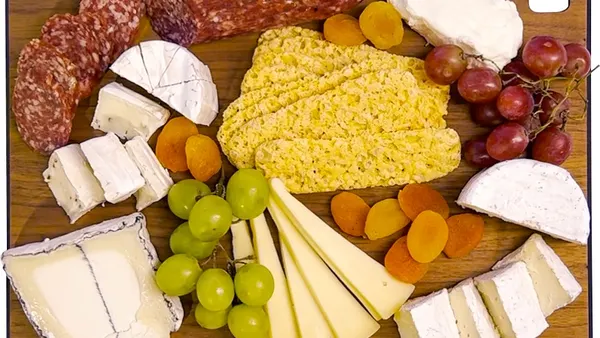Impulse buying is no longer relegated to brick-and-mortar experiences. Today, consumers are just as apt to buy something they hadn't intended as they browse online, thanks to the impact of social commerce—and specifically influencers. "Given that these purchases are highly incremental, the result is revenue that retailers and brands wouldn't otherwise have had," says Leah Logan, vice president of social commerce with Inmar Intelligence.
The holidays are the ideal time to optimize your strategy as consumers fill their sleighs.
A powerful influence
Most "planned" shopping experiences start with a product search on a search engine or retail site by consumers who are in an active shopping mode. By contrast the social commerce experience is about driving the consideration to purchase among users who weren’t necessarily intending to shop, through inspirational and aspirational content that is primarily influencer-led.
"Users who follow influencers have created a relationship with them based on trust and authenticity," says Logan. It's this relationship, coupled with influencers' unique ability to showcase products and integrate purchase levers, that has fueled the rapid growth of social commerce. By 2023, social commerce is expected to account for over $56.17 billion in sales, almost double the total for 2020.
Inmar research shows that more than three-quarters of shoppers have made a purchase based on influencer recommendations, with 97% of Gen Z saying they turn to influencers for inspiration and 61% of consumers ages 18 to 34 saying influencers affect their decision-making.
Yet while influencers are certainly a huge power point, they are not the sole driver of social commerce. "We find that social commerce has been narrowly defined, and thus brands are likely not realizing how much it impacts both in-store and traditional e-commerce purchasing," Logan says.
What social commerce looks like for the upcoming holiday season
Retailers that want to be successful need to maximize their options to reap the full benefits of social commerce. With consumers in a buying mood, 'tis the season to pull out all the stops. Shoppers are creating their gift lists, but they're also on the hunt for the items that are grocers' bread and butter, from ingredients for baking and entertaining, to décor, cleaning supplies and health and beauty items.
When you expand the definition of "social commerce," all of these categories have a place under the umbrella and can contribute to healthy holiday profits. For example:
- Influencer marketing: This channel will only increase in popularity for the holidays, when you consider the options: curated gift lists, holiday recipes, decor ideas, tablescapes, activities for the kids, skincare tips…the list goes on. All of this influencer content can be made into social commerce content by using integrated shopping tools like "add to cart" or "swipe to shop."
- Messaging: Grocers can create a user flow within a messenger environment that allows consumers to plan a holiday event based on guest list, dietary preferences, recipes and decoration ideas, made even more valuable by integrating recipe discovery, "add-to-cart" and targeted offers into the experience.
- Integrated shopping tools: Provide options such as "add to cart," "swipe to shop" or shoppable hotspots from within content. You can spotlight a complete solution like a beautifully decorated mantel or sumptuous feast, and they can easily add those items to their cart.
- On-platform purchasing: Take advantage of Facebook or Instagram's carousel option to showcase an ad to help consumers "create the perfect stocking" or "set a festive table," and add shop buttons so they can buy directly.
Tracking the touchpoints to show success
As the opportunities grow in social commerce, brands need to make sure it's a tactic that they have "added to cart." One stumbling block is the fact that social commerce—and influencer marketing especially—presents a complex path to purchase with numerous touchpoints and influences.
That's where an advanced platform like Inmar's ShopperSync™ can help better draw the connections that prove ROI. "We've maximized our influencer marketing product to sync up all of these different touchpoints," Logan says. "Our integrations allow for targeting on the front end, creating groups based on our first-party purchase data, and then through those predefined groups, we can check back for attributable purchases against those audiences."
There's no question that as brands make their holiday plans, a robust social commerce strategy must be on the "nice" list.










